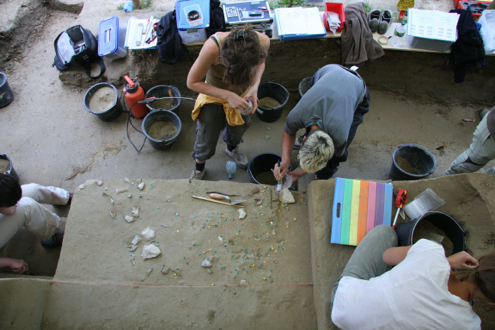Modern humans may have migrated into Austria around 43,500 years ago during a period with a cold steppe-like climate
A multinational team led by Philip Nigst (University of Cambridge and Max Planck Institute for Evolutionary Anthropology) and Bence Viola (Max Planck Institute for Evolutionary Anthropology) analysed stone tools recovered during a recent re-excavation of the find site of the Venus of Willendorf in Austria. The authors identified the stone tools as belonging to the Aurignacian culture, generally accepted as indicative of modern human presence. Chronostratigraphic information suggests the tools date to around 43,500 years ago, pre-dating other known Aurignacian artifacts. Based on the type of soil and its mollusk assemblage, climatic conditions during that time were likely cool, with a steppe-like environment and some conifer trees along river valleys. The date of the artifacts represents the oldest well-documented occurrence of behaviorally modern humans in Europe and suggests contemporaneity with Neanderthals in other parts of Europe, showing that behaviorally modern humans and Neanderthals shared this region longer than previously thought. Additionally, the results suggest that the early modern human settlers, who may have come from the warmer environments in southern Europe, were well-adapted to a variety of climates, according to the authors.
